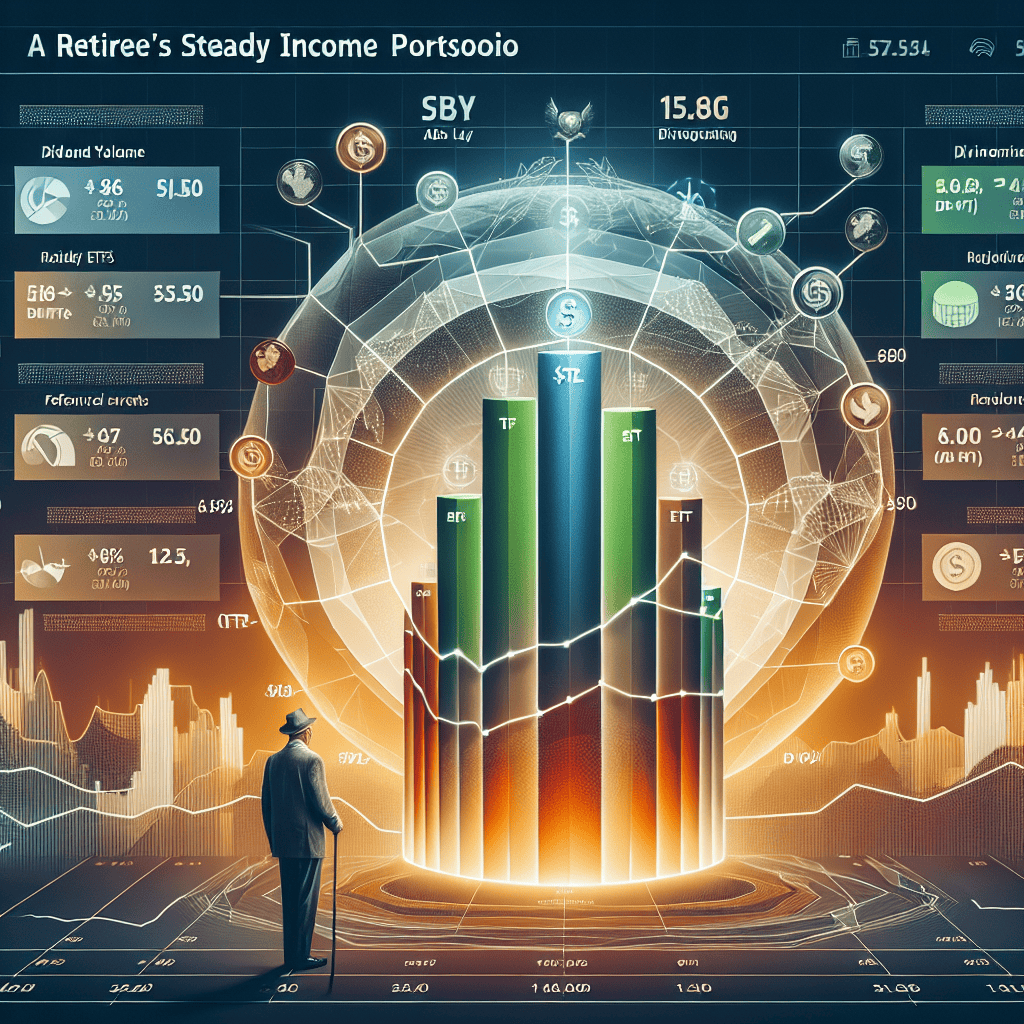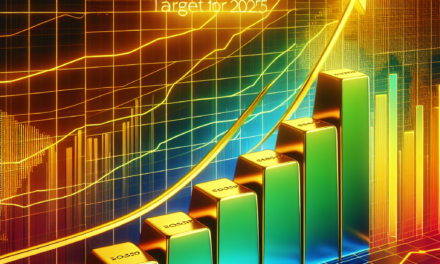“Secure Your Golden Years: Top 12 Stocks and ETFs for Reliable Retirement Income”
Introduction
A retiree’s dividend portfolio is a strategic collection of stocks and exchange-traded funds (ETFs) designed to generate steady income through dividends, providing financial stability during retirement. This approach focuses on selecting high-quality, dividend-paying companies and ETFs that offer reliable and consistent payouts. The top 12 stocks and ETFs in such a portfolio are typically chosen for their strong track records of dividend growth, solid financial health, and potential for capital appreciation. By investing in a diversified mix of sectors and industries, retirees can mitigate risks and ensure a balanced income stream. This introduction explores the key components and benefits of building a robust dividend portfolio tailored to meet the income needs of retirees.
Understanding Dividend Portfolios: A Guide for Retirees
Building a dividend portfolio is a strategic approach for retirees seeking a steady income stream during their golden years. As traditional pension plans become less common, many retirees turn to dividend-paying stocks and exchange-traded funds (ETFs) to supplement their income. Understanding the nuances of dividend portfolios is crucial for retirees aiming to balance income generation with risk management.
Dividend portfolios primarily consist of stocks and ETFs that regularly distribute a portion of their earnings to shareholders. These distributions, known as dividends, can provide a reliable income source, especially when interest rates on savings accounts and bonds are low. For retirees, the appeal of dividend portfolios lies in their potential to offer both income and capital appreciation. However, selecting the right mix of stocks and ETFs is essential to achieving these goals.
When constructing a dividend portfolio, retirees should consider several factors. First, the dividend yield, which is the annual dividend payment divided by the stock’s price, is a critical metric. A higher yield can indicate a more substantial income stream, but it may also suggest higher risk. Therefore, retirees should aim for a balance between yield and stability. Companies with a history of consistent dividend payments and growth are often more reliable choices.
Moreover, diversification is a key principle in managing risk within a dividend portfolio. By investing in a variety of sectors and industries, retirees can mitigate the impact of market volatility on their income. For instance, including stocks from sectors such as utilities, consumer staples, and healthcare can provide stability, as these industries tend to be less sensitive to economic cycles. Additionally, incorporating international stocks and ETFs can offer exposure to global markets, further enhancing diversification.
Another important consideration is the payout ratio, which measures the proportion of earnings a company pays out as dividends. A lower payout ratio suggests that a company retains more earnings for growth and can sustain its dividend payments even during economic downturns. Retirees should be cautious of companies with excessively high payout ratios, as they may struggle to maintain dividends if earnings decline.
In addition to individual stocks, dividend-focused ETFs can be an attractive option for retirees. These funds pool investments in a diversified portfolio of dividend-paying stocks, offering instant diversification and professional management. ETFs such as the Vanguard Dividend Appreciation ETF or the iShares Select Dividend ETF are popular choices, known for their focus on companies with strong dividend growth histories.
Furthermore, retirees should regularly review and adjust their dividend portfolios to align with their financial goals and risk tolerance. As market conditions and personal circumstances change, rebalancing the portfolio ensures that it continues to meet income needs while managing risk effectively.
In conclusion, constructing a dividend portfolio requires careful consideration of various factors, including yield, diversification, payout ratios, and the inclusion of ETFs. By understanding these elements, retirees can build a portfolio that provides a steady income stream while minimizing risk. As with any investment strategy, it is advisable for retirees to consult with financial advisors to tailor their portfolios to their specific needs and objectives. Through informed decision-making and regular portfolio management, retirees can enjoy the financial security and peace of mind that a well-structured dividend portfolio can offer.
Top 12 Dividend Stocks for Reliable Retirement Income
In the realm of retirement planning, constructing a dividend portfolio that provides steady income is a crucial strategy for many retirees. As individuals transition from active employment to retirement, the need for a reliable income stream becomes paramount. Dividend stocks and exchange-traded funds (ETFs) offer a viable solution, providing regular income while also offering the potential for capital appreciation. This article explores the top 12 dividend stocks and ETFs that can form the backbone of a retiree’s portfolio, ensuring a steady income stream during the golden years.
To begin with, Johnson & Johnson stands out as a stalwart in the healthcare sector. Known for its robust dividend history, this company has consistently increased its payouts for decades, making it a reliable choice for retirees seeking stability. Similarly, Procter & Gamble, a leader in consumer goods, offers a dependable dividend yield, supported by its diverse product range and global market presence. These companies exemplify the kind of stability and reliability that retirees should prioritize in their portfolios.
Transitioning to the financial sector, JPMorgan Chase is noteworthy for its strong dividend yield and solid financial performance. As one of the largest banks in the United States, it benefits from a diversified revenue stream, which supports its ability to pay dividends consistently. Additionally, Realty Income Corporation, often referred to as “The Monthly Dividend Company,” is a real estate investment trust (REIT) that provides monthly dividend payments, offering retirees a more frequent income stream.
In the realm of technology, Microsoft has emerged as a dividend-paying giant. While traditionally known for growth, Microsoft has also become a reliable dividend payer, thanks to its strong cash flow and dominant market position. This makes it an attractive option for retirees looking to balance growth with income. Furthermore, in the energy sector, Chevron offers a compelling dividend yield, supported by its extensive global operations and commitment to returning capital to shareholders.
Moving on to ETFs, the Vanguard Dividend Appreciation ETF is a popular choice among retirees. This ETF focuses on companies with a history of increasing dividends, providing a diversified approach to dividend investing. Similarly, the Schwab U.S. Dividend Equity ETF offers exposure to high-quality U.S. companies with strong dividend yields, making it a suitable option for those seeking broad market exposure with an income focus.
Moreover, the iShares Select Dividend ETF targets companies with a strong dividend-paying history, offering a diversified portfolio that spans various sectors. This ETF is particularly appealing for retirees who prefer a hands-off approach to investing while still prioritizing income. Additionally, the SPDR S&P Dividend ETF provides exposure to companies with a consistent track record of dividend increases, ensuring a reliable income stream.
Lastly, the Invesco S&P 500 High Dividend Low Volatility ETF combines high dividend yields with low volatility, offering retirees a balanced approach to income investing. This ETF is designed to provide steady income while minimizing risk, making it an ideal choice for those in retirement.
In conclusion, constructing a dividend portfolio for retirement requires careful selection of stocks and ETFs that offer both stability and income. By focusing on companies and funds with a strong history of dividend payments and growth potential, retirees can create a portfolio that not only meets their income needs but also provides peace of mind. The aforementioned stocks and ETFs represent a solid foundation for any retiree seeking reliable retirement income.
Best ETFs for a Steady Income in Retirement
In the realm of retirement planning, ensuring a steady income stream is paramount for retirees who wish to maintain their lifestyle without the stress of financial uncertainty. One effective strategy to achieve this is through a well-curated dividend portfolio, which can provide consistent income through dividends. Exchange-traded funds (ETFs) have emerged as a popular choice for retirees seeking diversification, professional management, and ease of access. These funds can offer exposure to a broad range of dividend-paying stocks, thereby reducing the risk associated with individual stock selection. As we explore the best ETFs for a steady income in retirement, it is essential to consider factors such as dividend yield, expense ratio, and the underlying holdings of each fund.
To begin with, the Vanguard Dividend Appreciation ETF (VIG) is a noteworthy option. This ETF focuses on companies with a history of increasing dividends over time, which can be a reliable indicator of financial health and stability. With a low expense ratio, VIG offers retirees an efficient way to invest in high-quality dividend growers. Similarly, the Schwab U.S. Dividend Equity ETF (SCHD) is another compelling choice, known for its focus on high-dividend-yielding U.S. stocks. SCHD’s strategy of selecting companies with strong fundamentals and a history of consistent dividend payments makes it an attractive option for those seeking income and growth potential.
Transitioning to international exposure, the iShares International Select Dividend ETF (IDV) provides access to high-dividend-paying companies outside the United States. This ETF can be an excellent addition for retirees looking to diversify their income sources globally. Additionally, the SPDR S&P Global Dividend ETF (WDIV) offers a broader approach by investing in dividend-paying companies worldwide, providing a balanced mix of U.S. and international stocks.
For retirees interested in sector-specific exposure, the Utilities Select Sector SPDR Fund (XLU) is worth considering. Utilities are traditionally known for their stable cash flows and high dividend yields, making XLU a suitable choice for those seeking steady income. Furthermore, the iShares U.S. Real Estate ETF (IYR) offers exposure to real estate investment trusts (REITs), which are required by law to distribute a significant portion of their income as dividends. This characteristic makes IYR an appealing option for income-focused investors.
In addition to these sector-specific ETFs, the Invesco Preferred ETF (PGX) provides exposure to preferred stocks, which often offer higher yields than common stocks. Preferred stocks are a hybrid between bonds and common stocks, providing a fixed dividend, which can be particularly attractive in a low-interest-rate environment.
Moreover, the SPDR Portfolio S&P 500 High Dividend ETF (SPYD) focuses on the highest dividend-yielding stocks within the S&P 500, offering a straightforward approach to capturing income from well-established companies. Similarly, the iShares Core High Dividend ETF (HDV) targets high-quality U.S. companies with strong financial health and attractive dividend yields.
Lastly, the WisdomTree U.S. Quality Dividend Growth Fund (DGRW) emphasizes companies with strong earnings growth potential and high-quality characteristics, aiming to provide both income and capital appreciation. This dual focus can be beneficial for retirees looking to preserve and grow their wealth over time.
In conclusion, constructing a retiree’s dividend portfolio with a selection of these top ETFs can provide a diversified and steady income stream. By carefully considering each fund’s characteristics and aligning them with individual financial goals, retirees can enjoy a more secure and fulfilling retirement.
Balancing Risk and Reward in a Retiree’s Dividend Portfolio

Balancing risk and reward in a retiree’s dividend portfolio is a crucial task that requires careful consideration and strategic planning. As retirees often rely on their investment income to support their lifestyle, it is essential to construct a portfolio that not only provides steady income but also preserves capital. This delicate balance can be achieved by selecting a mix of individual stocks and exchange-traded funds (ETFs) that offer reliable dividends while minimizing exposure to excessive risk.
To begin with, retirees should consider including blue-chip stocks in their portfolio. These are well-established companies with a history of stable earnings and consistent dividend payments. For instance, companies like Johnson & Johnson and Procter & Gamble have long been favorites among income-focused investors due to their robust business models and commitment to returning capital to shareholders. By investing in such stalwarts, retirees can enjoy a degree of safety and predictability in their income streams.
In addition to individual stocks, incorporating dividend-focused ETFs can further enhance the stability of a retiree’s portfolio. ETFs like the Vanguard Dividend Appreciation ETF or the iShares Select Dividend ETF offer diversified exposure to a broad range of dividend-paying companies. These funds are designed to track indices that focus on companies with a strong track record of dividend growth, thereby providing a layer of diversification that can help mitigate the risks associated with individual stock investments.
Moreover, it is important to consider the sector allocation within the portfolio. Certain sectors, such as utilities and consumer staples, are traditionally known for their defensive characteristics and reliable dividend payouts. Companies in these sectors tend to perform well even during economic downturns, making them attractive options for retirees seeking steady income. For example, investing in a utility company like Duke Energy or a consumer staples giant like Coca-Cola can provide a buffer against market volatility while ensuring a consistent flow of dividends.
However, while focusing on dividend yield is important, retirees should also be mindful of the potential for dividend cuts. Companies with excessively high dividend yields may be signaling financial distress, which could lead to reduced payouts in the future. Therefore, it is prudent to evaluate the financial health and payout ratios of dividend-paying companies to ensure that the dividends are sustainable over the long term.
Furthermore, retirees should not overlook the benefits of international diversification. Investing in global dividend stocks or international dividend ETFs can provide exposure to different economic cycles and currency fluctuations, potentially enhancing the overall resilience of the portfolio. Funds like the Vanguard International High Dividend Yield ETF offer access to a wide array of international companies with attractive dividend profiles, thereby broadening the income-generating potential of the portfolio.
In conclusion, constructing a retiree’s dividend portfolio that balances risk and reward involves a thoughtful blend of individual stocks and ETFs, sector diversification, and international exposure. By focusing on companies with strong dividend histories, maintaining a diversified approach, and being vigilant about the sustainability of dividend payments, retirees can build a portfolio that not only provides steady income but also safeguards their financial future. This strategic approach ensures that retirees can enjoy their golden years with the peace of mind that their investment income will remain reliable and resilient in the face of market uncertainties.
How to Select Dividend Stocks for Long-Term Stability
Selecting dividend stocks for long-term stability is a crucial task for retirees seeking a steady income stream. The process involves a careful evaluation of various factors that contribute to the reliability and growth potential of dividend-paying stocks and ETFs. To begin with, it is essential to understand the significance of dividend yield and payout ratio. Dividend yield, which is the annual dividend payment divided by the stock price, provides insight into the income generated relative to the investment. A higher yield may seem attractive, but it is important to ensure that it is sustainable. This is where the payout ratio comes into play. The payout ratio, which is the proportion of earnings paid out as dividends, should ideally be moderate, indicating that the company retains enough earnings to reinvest in its growth.
Furthermore, examining the company’s financial health is paramount. A strong balance sheet with manageable debt levels and consistent cash flow is indicative of a company’s ability to maintain and potentially increase dividend payments. Retirees should also consider the company’s dividend history. A track record of consistent or increasing dividends over several years suggests a commitment to returning value to shareholders. Companies that have weathered economic downturns while maintaining their dividend payments are often more reliable choices.
In addition to individual stocks, dividend-focused ETFs can offer diversification and reduce risk. These funds typically invest in a basket of dividend-paying stocks, spreading exposure across various sectors and industries. When selecting ETFs, it is important to assess the fund’s expense ratio, as lower costs can enhance overall returns. Additionally, reviewing the ETF’s holdings and sector allocations can provide insight into its risk profile and income potential.
Another critical aspect to consider is the industry in which the company operates. Certain sectors, such as utilities, consumer staples, and healthcare, are traditionally more stable and less susceptible to economic fluctuations. These industries often house companies with reliable cash flows and a history of paying dividends. Conversely, sectors like technology and energy may offer higher growth potential but can be more volatile, requiring careful analysis before inclusion in a retiree’s portfolio.
Moreover, it is beneficial to evaluate the company’s growth prospects. Companies with strong competitive advantages, such as brand recognition, proprietary technology, or a dominant market position, are more likely to sustain and grow their dividends over time. Analyzing industry trends and the company’s strategic initiatives can provide further insight into its future growth potential.
Finally, retirees should remain vigilant and periodically review their dividend portfolio. Economic conditions, interest rates, and company-specific factors can change, impacting dividend sustainability. Regularly assessing the portfolio ensures that it continues to align with income goals and risk tolerance.
In conclusion, selecting dividend stocks and ETFs for long-term stability requires a comprehensive approach that considers yield, payout ratio, financial health, industry stability, growth prospects, and diversification. By carefully evaluating these factors, retirees can build a robust dividend portfolio that provides a steady income stream, supporting their financial needs throughout retirement.
The Role of ETFs in a Retiree’s Income Strategy
In the realm of retirement planning, ensuring a steady stream of income is paramount for retirees who seek financial stability and peace of mind. One effective strategy to achieve this goal is through the incorporation of dividend-paying stocks and exchange-traded funds (ETFs) into a retiree’s investment portfolio. While individual stocks can offer attractive dividend yields, ETFs play a crucial role in diversifying risk and providing consistent income, making them an indispensable component of a retiree’s income strategy.
ETFs, by their very nature, offer a diversified basket of securities, which can include stocks, bonds, or other assets. This diversification is particularly beneficial for retirees, as it mitigates the risk associated with investing in individual stocks. By spreading investments across various sectors and companies, ETFs reduce the impact of any single company’s poor performance on the overall portfolio. This is especially important for retirees who may not have the time or resources to recover from significant financial setbacks.
Moreover, ETFs provide retirees with access to a wide range of dividend-paying stocks without the need to purchase each stock individually. This not only simplifies the investment process but also reduces transaction costs, as buying a single ETF can be more cost-effective than acquiring multiple individual stocks. Additionally, many ETFs are designed specifically to focus on dividend income, selecting stocks that have a history of paying and increasing dividends. This focus aligns well with the income needs of retirees, who often rely on dividends as a primary source of cash flow.
Another advantage of incorporating ETFs into a retiree’s income strategy is the potential for capital appreciation. While the primary goal is to generate income, the possibility of growth should not be overlooked. Many dividend-focused ETFs invest in companies with strong fundamentals and growth potential, offering retirees the opportunity to benefit from both income and capital gains. This dual benefit can enhance the overall return on investment, providing a financial cushion that can be particularly valuable in times of economic uncertainty.
Furthermore, ETFs offer a level of liquidity that is advantageous for retirees. Unlike some other investment vehicles, ETFs can be bought and sold on the stock exchange throughout the trading day, providing flexibility and ease of access to funds when needed. This liquidity ensures that retirees can adjust their portfolios in response to changing market conditions or personal financial needs without significant delay or cost.
In addition to these benefits, ETFs often come with lower management fees compared to mutual funds, making them a cost-effective option for retirees seeking to maximize their income. The lower fees mean that more of the investment returns are retained by the investor, contributing to a more efficient income-generating strategy.
In conclusion, while individual dividend-paying stocks can be a valuable component of a retiree’s portfolio, the inclusion of ETFs offers significant advantages that should not be overlooked. Through diversification, cost-effectiveness, potential for growth, liquidity, and lower fees, ETFs play a vital role in enhancing a retiree’s income strategy. By carefully selecting a mix of dividend-focused ETFs, retirees can build a robust portfolio that not only provides steady income but also adapts to their evolving financial needs, ensuring a more secure and comfortable retirement.
Building a Diversified Dividend Portfolio for Retirement
Building a diversified dividend portfolio for retirement is a strategic approach that can provide retirees with a steady stream of income while preserving capital. As individuals transition from their working years into retirement, the focus often shifts from accumulating wealth to generating reliable income. A well-constructed dividend portfolio can serve as a cornerstone of this strategy, offering both income and potential for capital appreciation. To achieve this, retirees should consider a mix of individual stocks and exchange-traded funds (ETFs) that have a history of paying consistent and growing dividends.
One of the primary considerations when selecting dividend stocks is the company’s track record of dividend payments. Companies with a long history of paying and increasing dividends, often referred to as “dividend aristocrats,” are typically more stable and financially sound. These companies have demonstrated resilience through various economic cycles, making them attractive options for retirees seeking dependable income. For instance, well-established firms in sectors such as consumer staples, healthcare, and utilities often exhibit these characteristics, providing a solid foundation for a dividend portfolio.
In addition to individual stocks, incorporating dividend-focused ETFs can enhance diversification and reduce risk. ETFs offer exposure to a broad range of dividend-paying companies, spreading risk across different sectors and geographies. This diversification can be particularly beneficial in mitigating the impact of any single company’s dividend cut or poor performance. Moreover, ETFs often come with lower management fees compared to mutual funds, making them a cost-effective choice for retirees.
When constructing a dividend portfolio, it is crucial to balance the pursuit of high yields with the need for sustainability. While high-yield stocks may seem attractive, they can sometimes signal underlying financial distress or unsustainable payout ratios. Therefore, retirees should conduct thorough research to ensure that the companies they invest in have strong fundamentals and a commitment to maintaining their dividend payments. Evaluating metrics such as the payout ratio, earnings growth, and cash flow stability can provide valuable insights into a company’s ability to sustain its dividends over the long term.
Furthermore, retirees should consider the tax implications of their dividend income. Depending on the jurisdiction, dividends may be taxed at different rates, and certain accounts, such as tax-advantaged retirement accounts, may offer more favorable tax treatment. Understanding these nuances can help retirees maximize their after-tax income and make more informed investment decisions.
In summary, building a diversified dividend portfolio for retirement involves selecting a mix of individual stocks and ETFs that offer reliable and growing income streams. By focusing on companies with a strong history of dividend payments and incorporating ETFs for added diversification, retirees can create a portfolio that balances income generation with risk management. Additionally, careful consideration of yield sustainability and tax implications can further enhance the effectiveness of a dividend-focused retirement strategy. As retirees navigate this new phase of life, a well-structured dividend portfolio can provide the financial security and peace of mind needed to enjoy their golden years.
Q&A
1. **What is a retiree’s dividend portfolio?**
A retiree’s dividend portfolio is a collection of stocks and ETFs specifically chosen to provide steady income through dividends, which can help support living expenses during retirement.
2. **Why are dividends important for retirees?**
Dividends provide a regular income stream, which is crucial for retirees who may no longer have a regular salary. They offer a way to generate income without selling off investments.
3. **What are some characteristics of good dividend stocks for retirees?**
Good dividend stocks for retirees typically have a history of stable or growing dividend payments, strong financial health, and a sustainable payout ratio.
4. **What is an ETF and why might it be included in a retiree’s portfolio?**
An ETF (Exchange-Traded Fund) is a type of investment fund that holds a collection of assets like stocks or bonds. It might be included in a retiree’s portfolio for diversification and to reduce risk.
5. **Name a few top dividend stocks often recommended for retirees.**
Some top dividend stocks often recommended for retirees include Johnson & Johnson, Procter & Gamble, and Coca-Cola.
6. **Name a few top dividend ETFs often recommended for retirees.**
Some top dividend ETFs often recommended for retirees include Vanguard Dividend Appreciation ETF (VIG) and iShares Select Dividend ETF (DVY).
7. **What should retirees consider when selecting dividend stocks or ETFs?**
Retirees should consider the dividend yield, payout ratio, company or fund stability, historical performance, and how these investments fit into their overall financial plan.
Conclusion
A retiree’s dividend portfolio focused on top stocks and ETFs for steady income should prioritize stability, reliability, and consistent dividend payouts. The selection of 12 high-quality dividend-paying stocks and ETFs can provide a balanced mix of income and growth potential, ensuring financial security in retirement. Key considerations include the company’s dividend history, payout ratio, financial health, and sector diversification. By carefully choosing a diversified portfolio of well-established companies and funds, retirees can achieve a sustainable income stream that supports their financial needs while mitigating risks associated with market volatility.





